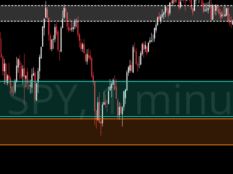5 Common Mistakes That Can Sink Your New Trading Battleship (And How to Chart a Course for Success)
So, you're ready to conquer the seas of the market? Welcome aboard, fellow trader! The world of trading can be an exciting adventure, but like any good sea voyage, there are rough waters to navigate. Especially for new traders, there are some common pitfalls that can turn your flagship into a shipwreck. But fear not, fair trader! By recognizing these mistakes and having a solid plan, you can steer clear of trouble and set sail towards your financial goals.

Mistake #1: Winging It Without a Plan
Jumping into a trade without a strategy is like setting sail without a map – pure chance will determine your course. Develop a trading plan that outlines your entry and exit points, risk management strategies, and trading tools you'll use. This plan should be based on your research and risk tolerance.
Chart Your Course: Before each trade, identify your ideal entry and exit points based on technical analysis or fundamental factors that align with your strategy.
Mind the Weather: Set stop-loss orders to limit potential losses if the market moves against you. Remember, even seasoned traders experience losses; it's about managing them effectively.
Mistake #2: Letting Emotions Rock the Boat
The market can be a turbulent place, and fear and greed can easily cloud your judgment. Don't let emotions dictate your trades. Stick to your plan and avoid impulsive decisions based on short-term market swings.
Stay Calm in the Storm: Develop discipline and emotional control. There will be times to adjust your course, but these decisions should be based on logic, not fear or excitement.
Consider a Trading Journal: Track your trades and emotions to identify patterns. This can help you understand your emotional triggers and make more objective decisions in the future.
Mistake #3: Trading Too Often (Overtrading)
New traders often feel the pressure to be constantly in action. However, excessive trading can eat into your profits through transaction fees and can cloud your judgment.
Focus on Quality Over Quantity: Wait for high-probability trades that align with your strategy instead of making frequent, smaller bets.
Be Patient: Discipline yourself to wait for the right opportunities. Sometimes, the best course of action is to stay on the sidelines and let the market come to you.
Mistake #4: Ignoring Risk Management
The key to successful trading is managing risk, not chasing high returns. Never risk more than you can afford to lose on a single trade.
Know Your Limits: Set a risk tolerance level and stick to it. A common approach is to risk no more than 1-2% of your capital per trade.
Diversify Your Portfolio: Don't put all your eggs in one basket. Spread your investments across different assets to mitigate risk.
Mistake #5: Not Learning From Your Experience
The market is a constant learning experience. Analyze your wins and losses to identify areas for improvement.
Become a Scholar of the Market: Read books, articles, and watch educational videos from reputable sources. There's always more to learn about trading strategies and market behavior.
Seek Guidance (But Do Your Own Research): Consider mentorship from experienced traders, but remember to do your own research and never blindly follow someone else's advice.
One way to avoid these is to have a solid strategy!! Be sure to check out our Coaching Program in the discord to get paired up with a Veteran Trading Coach and learn a strategy that works for you!!
https://pennybo.is/CoachesExplained



